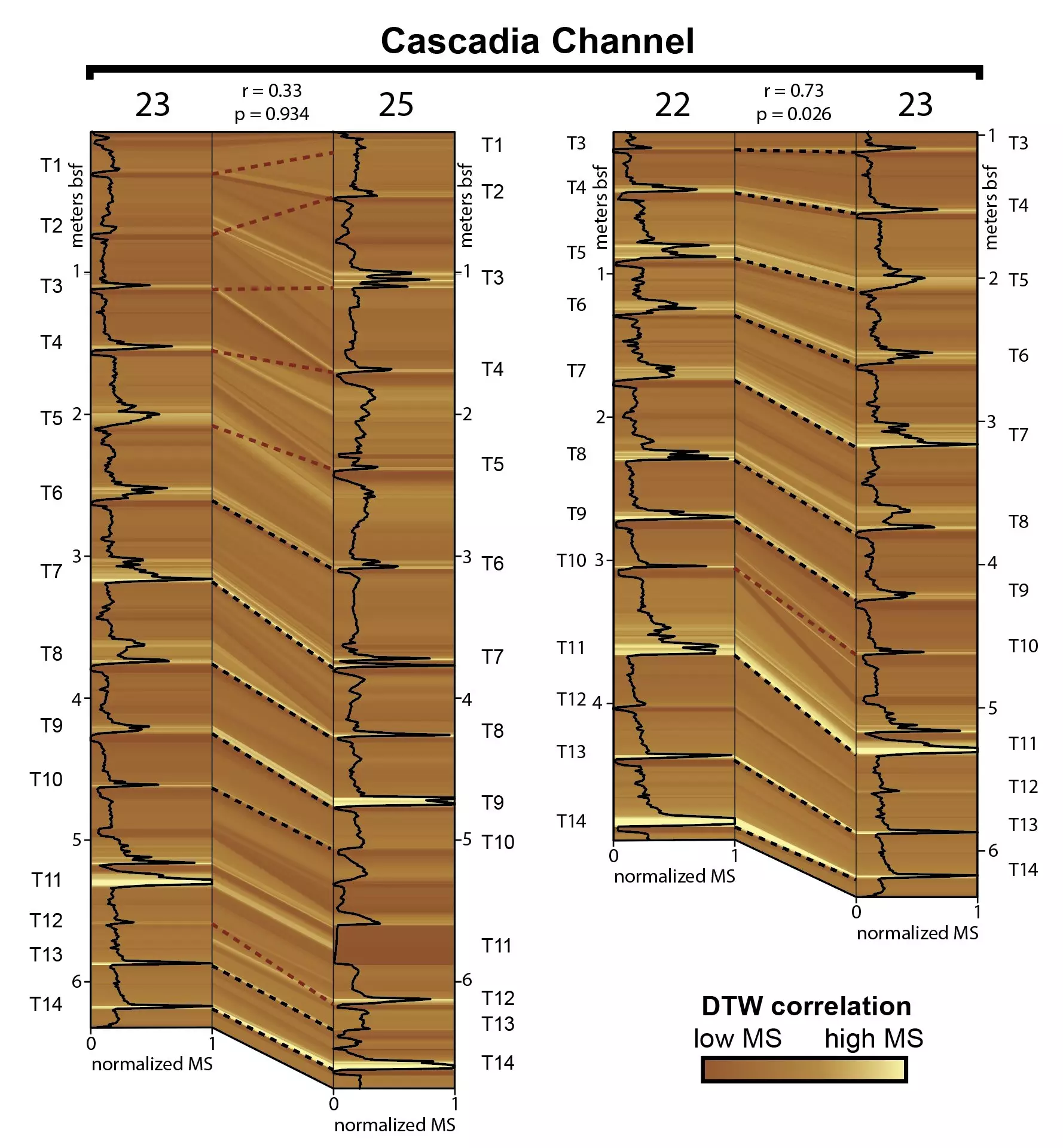The Cascadia subduction zone, a geological fault line extending from Northern California to British Columbia, has long been recognized for its seismic potential. Throughout history, this region has experienced devastating earthquakes, with its last notable event recorded in 1700. Such quakes have not only reshaped the landscape but also generated tsunamis that traveled vast distances, reaching as far as Japan. As the Pacific Northwest continues to grow, housing millions of residents in sprawling urban areas, the looming question remains: when will the next major earthquake occur? Recent research sheds light on the geological evidence that informs predictions of seismic activity, particularly in regard to turbidites, the oceanic deposits that may serve as a historical record of past quakes.
Turbidites are sedimentary layers formed by underwater landslides, composed of grains that settle after being stirred up by turbulent water flows. Traditionally, geologists have relied on these deposits as indicators of past earthquake activity. The presence of turbidites in geologic cores taken from the seafloor has led researchers to establish timelines of seismic events based on their distribution and characteristics. However, the classification of these sedimentary layers is more complex than previously thought. The recent study conducted at The University of Texas at Austin has challenged the historical accuracy of turbidite recordings and their correlation to earthquake occurrences.
Analyzing a selection of turbidite layers from the Cascadia subduction zone, researchers employed a sophisticated algorithm known as dynamic time warping (DTW). Originally developed in the 1970s for applications in voice recognition and dynamic graphics, DTW analyzes patterns across varying time scales. This marks an innovative approach in geology, as it seeks to quantify the relationships among the turbidite samples rather than relying on qualitative visual assessments, which inherit biases.
The research results raised significant doubts regarding the assumptions made about the correlation of turbidite deposits to seismic events. The algorithm demonstrated that most sampled layers did not correlate better than random chance, suggesting that these deposits might not be reliable predictors of past earthquakes. “This means we need to approach our understanding of these timelines with caution,” noted Joan Gomberg, a research geophysicist involved in the study. While the study does not fundamentally alter the estimated frequency of earthquakes in the region—approximately every 500 years—it does highlight the requirement for further research on the nature and implications of turbidite deposits.
One critical message conveyed by this research is the necessity of developing rigorous methodologies for geologic interpretation. The reliance on turbidites as markers for past seismic events may need to be reassessed, and this study proposes a methodological framework that can be applied in future investigations. By utilizing quantitative techniques, scientists can achieve more systematic comparisons and establish clearer connections, or discrepancies, in the geological record.
As researchers work to refine the understanding of the link between turbidites and earthquakes, it becomes clear that a multifaceted approach will be crucial. While the current study focused on turbidites, other geological features and data sources may provide essential context. Understanding the role of different geological and environmental factors—such as landslides triggered by storms or floods—could further elucidate the complexities surrounding earthquake predictions. Zoltán Sylvester, one of the study’s co-authors, emphasized that the algorithm’s application is just a starting point and encourages geoscientists to dive deeper into these relationships.
Furthermore, the implications of this research extend beyond academic circles. As urban populations grow in the Pacific Northwest, communities must prioritize preparedness for future seismic events. While uncertainties persist regarding the exact timing of future quakes, a clearer understanding of the geological past can help inform mitigation strategies and community preparedness initiatives.
The exploration of Cascadia’s seismic history represents a complex intertwining of geology, technology, and community safety. As new research continues to challenge established understandings, it offers opportunities for improved methodologies in interpreting geological records. Ultimately, by embracing innovative techniques and questioning existing paradigms, scientists can enhance their comprehension of the earthquake landscape, ensuring that society is better equipped to face the next seismic challenge. Therefore, a proactive approach, guided by thorough research and tailored preparedness measures, is indispensable for the vast populations dwelling in this tectonically active region.

